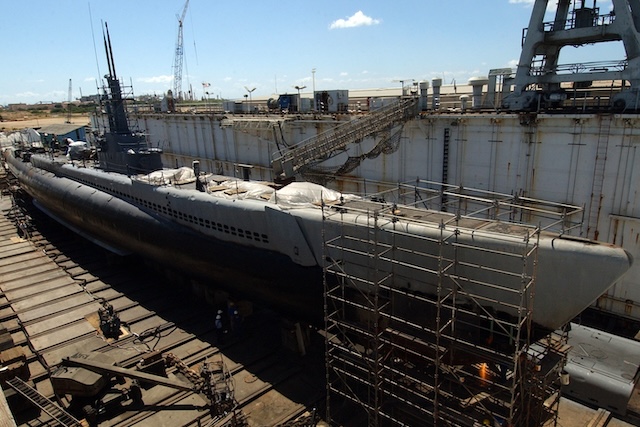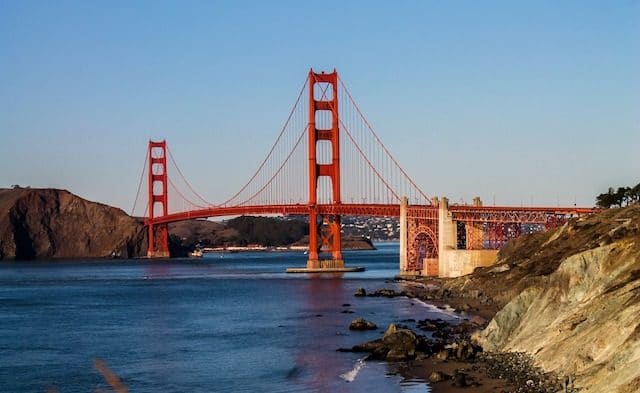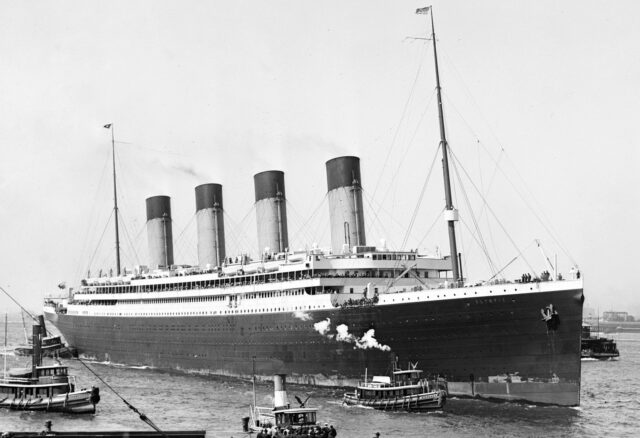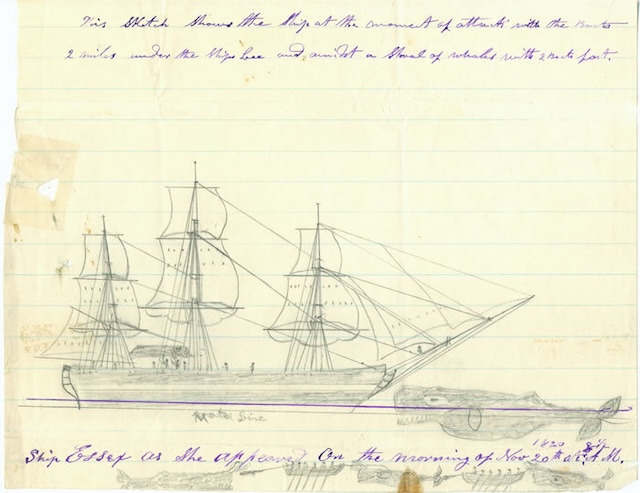For a long time, if you wanted to travel the world, you had to travel on water at some point. And the thing about water is that on the surface, everything literally floats smoothly. However, when something goes wrong, you drown. Drowning sucks. It's cold, you can't breathe, the pressure can crush you, and stuff will eat you. Please avoid drowning at all costs.
Historically, not everyone and everything has escaped the flood, and sometimes the stories of what happened are much stranger than you might think.
10. USS Bowfin - the only submarine that ever sank a bus

Submarines on both sides sank thousands of ships during World War II. They proved to be some of the most valuable naval assets a country could have. They were so good at what they did that the aircraft carrier USS Bowfin managed to sink the bus. Think about that for a second.
A bus, let us clarify, is not a watercraft. However, back in 1944, after repairs in Pearl Harbor, "Bowfin" put to sea. He headed after a Japanese convoy to the islands near Okinawa. In the harbor, at the pier, there were three ships with a crane, some supplies and the like.
Taking advantage of the opportunity, "Bowfin" fired three torpedoes, then quickly changed position and fired three more. The result was the destruction of several Japanese ships, as well as the pier. This meant that in addition to sinking enemy ships, Bowfin managed to disable a crane and a bus parked on the pier. This is the only recorded instance of a submarine putting public transport out of action.
9. L. Ron Hubbard claimed to have sunk two mysterious submarines during World War II.

Scientology founder L. Ron Hubbard loved the sea. There is a whole water division of Scientology, a story for another time, but Hubbard himself was also a naval officer and served at sea in the army. Or at least he had some colorful stories about it.
Back in 1943, Hubbard fought in World War II. He was, he said, an absolute MCU-level hero, like Captain America. According to the Navy, not so much. He claimed to have sunk two Japanese vessels off the Oregon coast in May of that year. The problem was, the Navy couldn’t find any trace of the vessels, although it appears that his crew fired on a log at one point. Hubbard later claimed that this was a cover story because the military didn’t want anyone to know the Japanese were that close to shore.
Hubbard later lost command after accidentally straying into Mexican waters and firing on an island for no apparent reason.
8. North Korea says it sank a decommissioned US vessel

Many things are hard to discern in the fog of war, and some small details have likely been lost to history around the world in every conflict in human history. Sometimes it’s less the uncertainty of who fired first, or what started a particular battle where, and more that someone is simply lying. But if you’re going to lie, try to make it believable. North Korea failed at that.
North Korea claims they sank a US warship back in 1950 "Baltimore" . It was a heavy cruiser, and it would be important for the history of any army to destroy this ship. However, official records state that the Baltimore was decommissioned in 1947 .
7. The US military sank a radioactive aircraft carrier near San Francisco.

When a boat is deliberately sunk by the military or the company that owns it, it's called scuttling. There's nothing wrong with that, and sometimes it's even used to make artificial reefs for fish and cool diving spots. It's an effective form of recycling. But you'd hope that if someone were to scuttle a ship, they'd let people know it was happening. Especially if the ship was radioactive.
USS Independent — an aircraft carrier that was involved in nuclear bomb tests. As a result, the ship absorbed more radiation than it was supposed to. They used it as a target ship at Bikini Atoll.
In the late 1940s, they returned the ship to San Francisco to study nuclear decontamination, then in 1951, they took it 30 miles offshore and sank it. Experts said the ocean was a good buffer against radiation, and the contamination was minimal, so the risk of it getting into fish you might eat was minimal. Which, of course, doesn’t mean none. Just minimal.
6. Twin ship "Titanic " sank the submarine.

RMS Olympic was launched in 1910 and was the largest ship in the world at the time. It was the first of three revolutionary ocean liners, the third of which was far more famous – "Titanic" . But before that, " Titanic" stole her glory, " "Olympic" was of great importance. In fact, she was one of the ships that responded to the distress call "Titanic" , when it sank.
Since World War I broke out, no one was transporting huge cruise ships across the sea, but " "Olympic" painted gray, had its portholes covered and other changes made to make it less visible to enemy ships. It became Olympic champion HMT and served as a warship. The paint job was changed to bright camouflage and she was equipped with weapons.
In 1918 Olympic The crew spotted a German submarine in the English Channel and repelled its torpedoes, ramming the enemy ship and sinking it.
5. More than half a dozen nuclear submarines sank at sea.

Nuclear submarines have been around since 1955. With such an extensive history, you can safely assume that not all of them are in service anymore, but you might not want to know what happens to all of them, because the story is not a comforting one. Not every nuclear submarine has returned safely to harbor for a safe and friendly decommissioning.
At least 8 nuclear submarines have been lost at sea. This means that the nuclear reactors and weapons have sunk into the icy depths, possibly unknown. By all accounts, this is not such a bad thing, as the reactors are protected and can keep them safe for centuries, by which time most of the fuel will have been lost anyway. Fun!
Russia had planned to recover some of its lost ships: the K-159, sunk in 1963, and the K-27, sunk in 1982 despite being moderately radioactive. So far, nothing has happened on that front.
4. Garfield's phones from a sunken shipping container have been washing up on shore for decades.
The sea eventually returns everything to dry land. Some things can disappear at sea for years before washing up somewhere. Garfield's phones have been washing up on the shores of Brittany for nearly 40 years, thanks in part to a shipwreck with the most impressive cargo of all time.
In 2019, after years of struggling with the phones, a shipping container full of them that sank in the 1980s was finally identified. The container was carried away to a cave that could be accessed at low tide, like a strange pirate treasure.
3. An overflowing toilet sank a submarine.

U-boats were terrifying during the war, sinking up to 3,000 Allied ships. Obviously, this resulted in a lot of loss of life and damage, so anything that could destroy a U-boat was welcomed. And in one case, one ended up in the toilet.
U-1206 was in the war towards the end of the battle and was one of the most advanced ships in the fleet. For some reason, German engineers decided that removing the septic system to save space was a good idea. Instead, the U-boats simply dumped the garbage into the sea. The problem was that it only worked near the surface.
After failing to get the toilet working on the first voyage, the captain called an engineer who turned the wrong valve and started flooding the sub with seawater and feces. Why was there a valve that allowed this to happen? Who knows?
A mixture of feces and sea water flooded the battery room, which was conveniently located under the bathtub. As a result, the batteries began to emit toxic gas.
Once filled and gassed, the submarine had to surface, and it had to do it fast. They fired torpedoes to increase buoyancy, then surfaced just ahead of the Allied attackers. Most of the crew was captured, and U-1206 sank.
2. In case of flooding Eastland More people died than on the Titanic.

Some maritime disasters can be attributed to bad luck, but not all. Eastland the disaster was a tragedy, and the death toll was due to extremely poor planning. Unlike Titanic" The Eastland was not sailing on the open sea; it was on Lake Michigan. And when it sank, nearly 850 people died.
« Eastland" was a passenger liner carrying 2,573 passengers from Chicago across the lake to the park for a day trip and picnic. The boat, one of five that carried Western Electric Company employees, was already known for its instability and had nearly capsized in the past.
On the day of the fateful voyage, it pulled into port before all the passengers were on board. Instead of canceling the voyage, the crew simply tried to use ballast to balance the boat. They fixed it, and then things started to turn around.
At 7:25, it was listing 25 degrees to the left and taking on water. At 7:30, it set off anyway, then rolled onto its side. Because so many people were on board, even though it happened right in the port in front of people, hundreds of people were trapped under the boat and could not be rescued. In all, 844 people died.
No one was ever held accountable for the deaths, and it was assumed that the cause was indirectly related to the Titanic. The boat was equipped with new lifeboats after the sinking "Titanic" , which did not have enough passengers. It is believed that the lifeboats "Eastland " made the boat heavy, which led to instability.
1. Whaling ship "Essex" was sunk by a sperm whale

Whaling ship "Essex" sank on November 20, 1820, and it can be considered the most dramatic sinking in history since the Titanic" , at least in terms of the overall impact it has had on culture. At first glance, this seems difficult to understand, since everyone knows Titanic and probably very few know Essex" But he is famous not so much for the fact that “ Essex" sank, how many themes , Why he sank.
Vessel "Essex" rammed by a sperm whale. He was on a whaling voyage that lasted two and a half years when he came across the capsule. Smaller boats were sent out to harpoon the whales, and one of them was hit.
At the same time, one whale broke away from the herd, and it was big. Reports say it was 85 feet long, much longer than the average 65 feet for adult sperm whales. It headed straight for "Essex" and crashed into the hull. The size and speed were too much even for the 238-ton whaler. The hull caved in and the boat sank.
If this story seems vaguely familiar, it might be because it was the inspiration for "Moby Dick" Herman Melville.













Оставить Комментарий